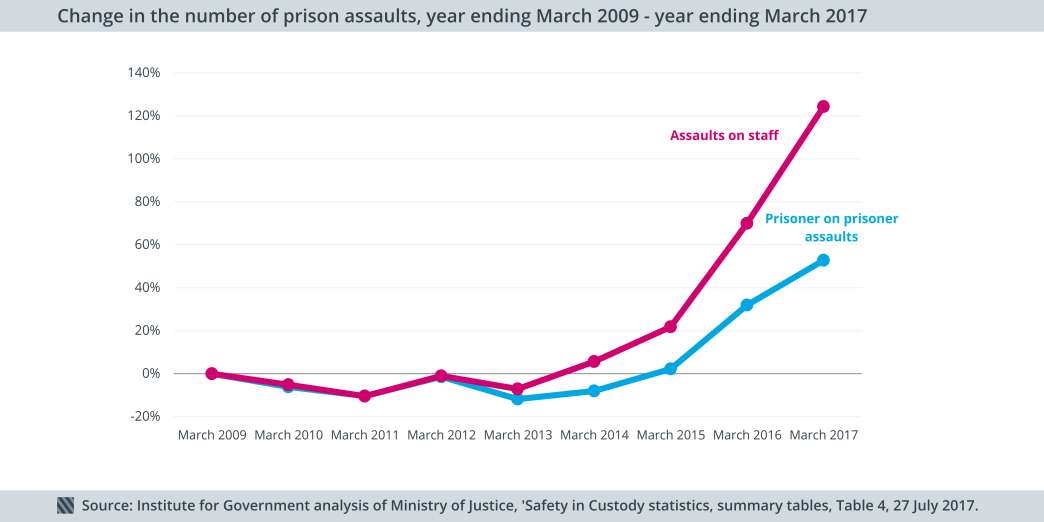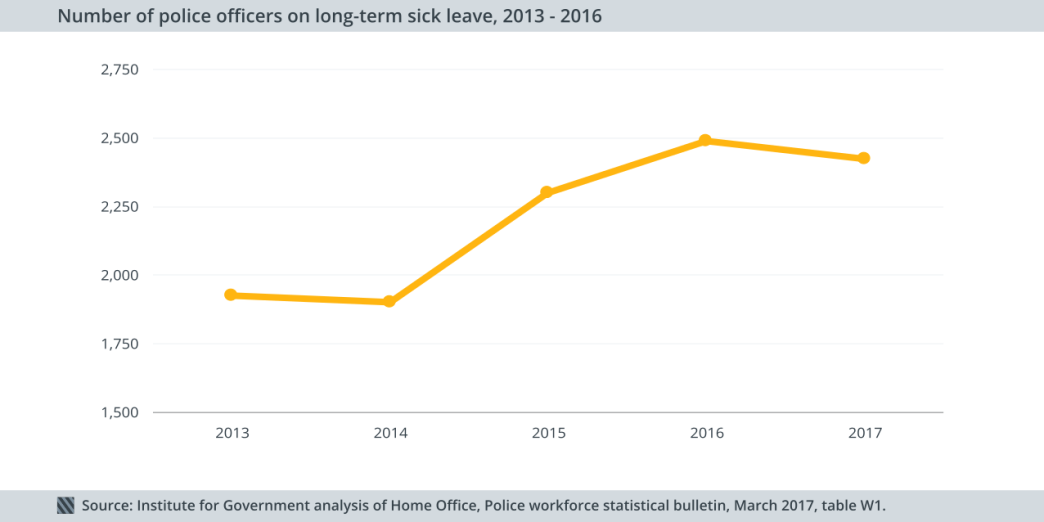There are different workforce pressures in prisons and the police and the Government must use the data to make clear the specific problems it is trying to solve in different public services, argues Alice Lilly.
It has been reported today that the Government is set to announce pay rises of above 1% for police and prison officers, breaking the cap on public sector pay that has been in place since 2013. So what are the workforce pressures within these two services and what exactly are the problems the Government is trying to solve?
Recruitment and retention are the key workforce challenges in prisons.
Following a sharp increase in prison violence, the Government announced plans in the 2016 Autumn Statement to recruit an additional 2,500 officers by the end of 2018.
But since then, levels of violence have continued to rise.

Some changes to pay and benefits for staff in 31 prisons with acute recruitment problems were announced in February.
While numbers are slowly beginning to tick up, gaining these 2,500 extra officers may prove challenging given ongoing problems with retention: in the year to March, the leaving rate among band 3-5 officers was 9.4%, an increase of 1.9 percentage points on the previous year.
Morale is the key workforce challenge among police.

Data on long-term sick leave - one indicator of staff morale - shows that 2,424 officers were on long term sick leave in 2017, a small decline on 2016 and the first fall since 2014, but far higher than the 1,928 officers on leave in 2013.
In the latest Police Federation survey of pay and morale among the police, 60.2% of respondents reported low personal morale, compared to 55.9% in 2016 (although below 70.2% in 2015).
This low level of morale is driven by concerns about pay and workload. In the past year, the proportion of police stating that their morale is negatively affected by their workload and responsibilities has increased by nine percentage points to 61.1%.
The vast majority of officers - 86.5% - reported they felt that their pay was not fair considering the stresses of the job.
The Government must use data to clarify the workforce problems it is trying to solve.
The data shows us there are workforce issues among both prison and police officers, but they are not the same problems. In lifting the pay cap for both groups, the Government is using one solution to solve two different problems - the recruitment and retention issues among prison officers, and morale issues among the police.
This week’s announcement is likely to create political pressure to break the pay cap for other public sector workers, such as nurses and teachers. There are workforce pressures building up in these services – such as missed targets for trainee teachers in maths and computer science – but they are different in nature.
Before taking further action on the pay cap, the Government must use the data to make it clear in each case what problem exactly it is trying to solve.
- Topic
- Public services